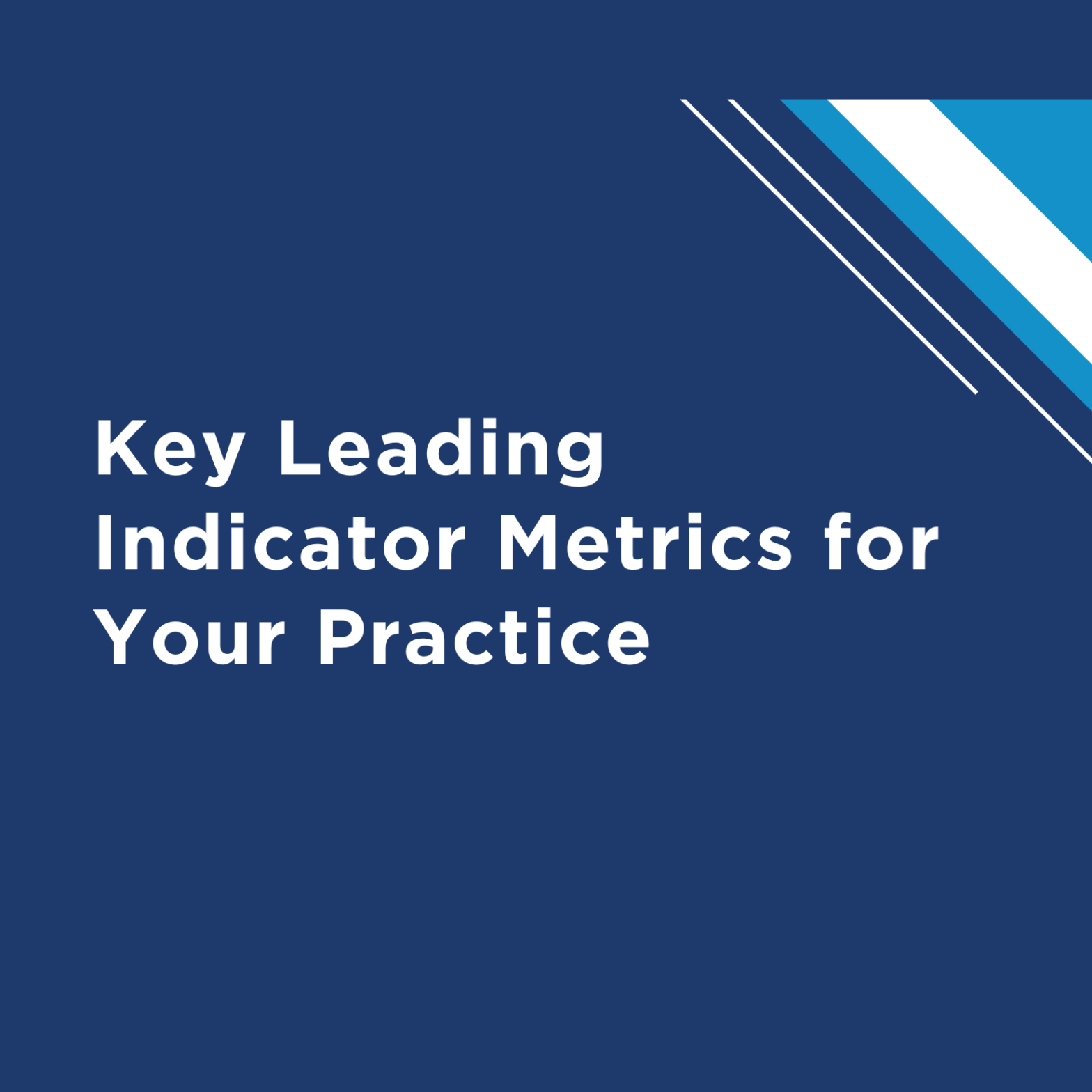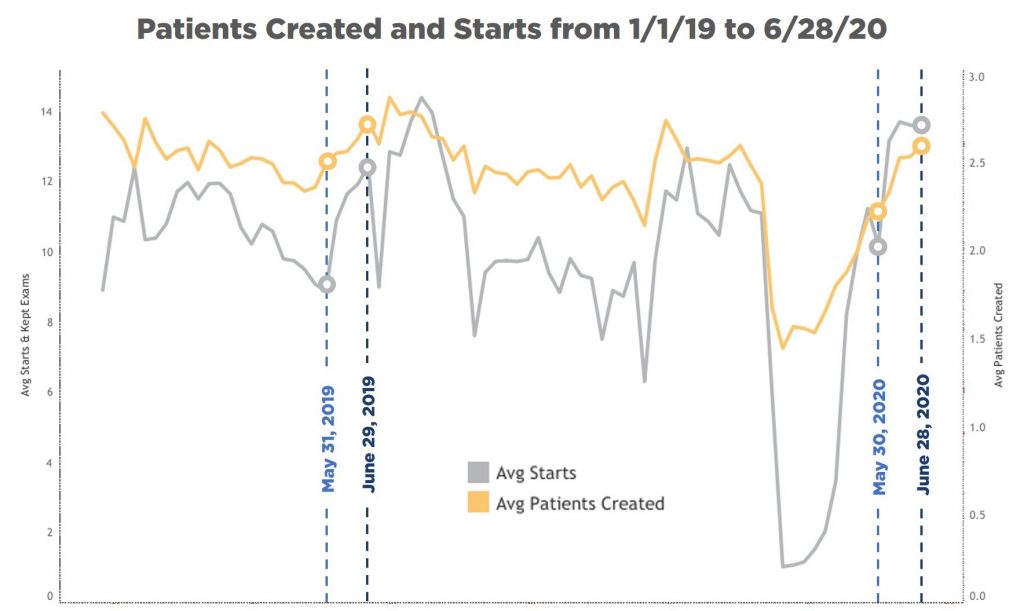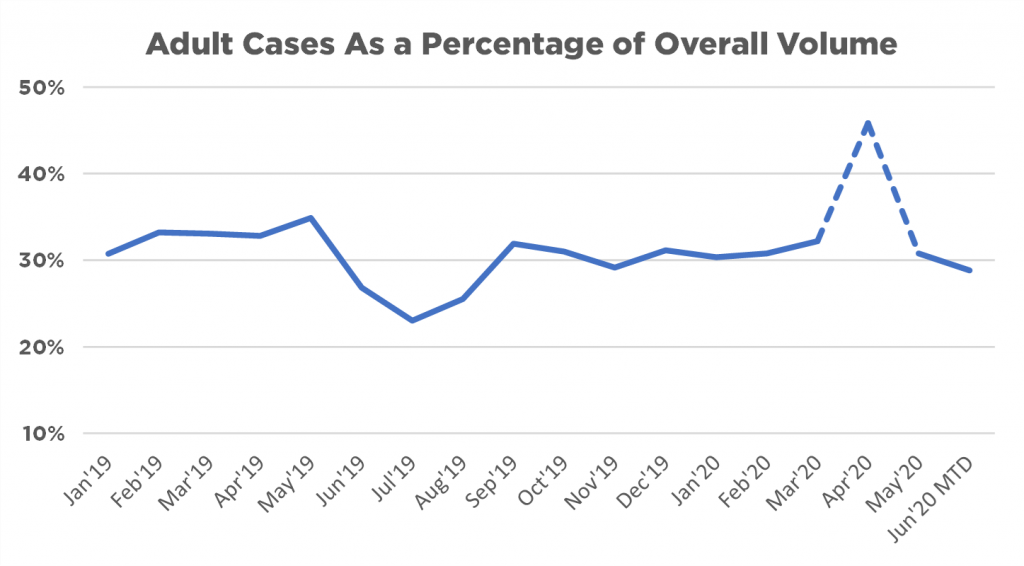In part two of this three-part series, we focused on how to increase average production per case by rationalizing in-network participation. As we detailed with data, many carrier networks add little quantifiable growth or conversion benefit to the practice and often require steeply discounted fees. Practices we worked with that were able to shed some… Continue reading How To Sustain Growth in a Tight Economy Part 3: Boosting Production without Increasing Starts
Category: Blog
How To Sustain Growth in a Tight Economy Part 2: In-Network Insurance Participation
As we identified in part one of this series, the current economic landscape continues to trend light on consumer confidence with dropping savings rates and rising credit card debt. Gaidge data reveals that even though adolescent starts are beginning to come back, adult starts are down over 10% and have been dragging down the average… Continue reading How To Sustain Growth in a Tight Economy Part 2: In-Network Insurance Participation
How To Sustain Growth in a Tight Economy – Part 1: Increasing Net Fees
Let’s face it: after a windfall of record starts growth in 2021, it’s taken our industry some time to adjust to the hard reality of the post-stimulus economy we find ourselves in today. Inflation spikes in 2022 and continuing uncertainty about when rising interest rates will stabilize are causing segments of our consumer target to pause or defer seeking treatment.
Not only has the COVID stimulus dried up and household expenses resumed, but student loan payments are about to kick back on.
Gaidge numbers show 2022 starts retracted by 6%, and year-to-date data for 2023 shows a continued slide of 3.5 percent. The acute reason for this slide is that we are seeing adult aligner starts (25-30 percent of the typical practice) down by almost 11%.
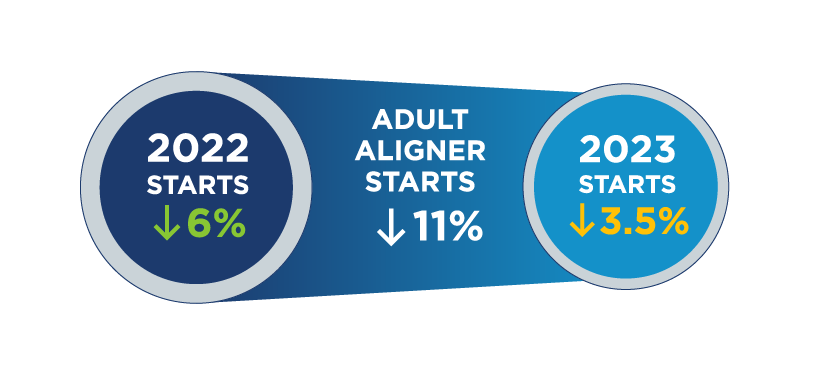
Although I believe a good amount of that adult start contraction to be self-inflicted (listen to OrthoFi’s Q2 Metrics That Matter podcast for more on that), let’s agree that adult demand for treatment is likely going to be lighter as long as we linger in the wait-and-see mode with the economy. Since adult treatment tends to be more discretionary and whimsical, the timing is not the best for this segment. At the same time, the birth rate has been declining for over 15 years, so there aren’t more kids in the market to fill this gap.
If you accept that your inbound patient calls are likely to be down by 3% to 5%, that means if no other variable changes (local population growth, increasing case acceptance, etc.), you will have 3% to 5% fewer at-bats and subsequently concede that amount in starts and production. Is there something we can do to offset or overcome that impact? YES.
The priority needs to shift to maximizing production per patient without materially impacting our conversion rates. This series will focus on three effective ways to realize your maximum potential and sustain your production growth even with lower consumer demand.
The first and most straightforward way to increase production per patient is to increase your net fees. There are three strategic ways to increase net fees: fee schedule increases, adding levels of service, and reducing promotional fee discounts. I know that sounds obvious, and I also know it sounds scary to embark on increasing fees with the fear of killing your conversion rate.
Let’s look at some facts that will give you confidence that there is an untapped upside. Through analysis OrthoFi conducted in 2022, we found the average OrthoFi practice increased their fees by over 6 percent from the start of 2021. We wanted to understand how that impacted the conversion rate.
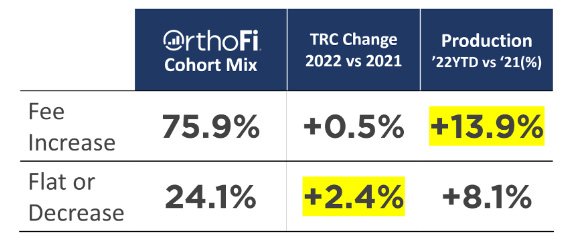
To isolate the impact of fee increases, we separated the OrthoFi practices into two cohort groups: 1) those that increased their fees (net of discounts); 2) those that either stayed flat or decreased their fees (via fee schedule change or increased discounting). What we saw was that both groups increased their conversion rates, which validates that the fee increases did not dampen demand.
More importantly, although the flat/decreased fee group saw a slightly higher conversion rate increase (2.4% vs 0.5%), the impact on production per case of the increase group more than compensated with overall production increases. If you were among the practices that did not materially increase your fees since COVID, this should give you the confidence to explore a 5% to 6% lift. Even if you did some increases in the last two years, there might still be an upside without diminishing returns.
Fee Schedule Increases
The following chart shows the results of a case study OrthoFi conducted with a large multi-location group practice. After months of working with the customer, we identified that they were under-indexed on their treatment fees.
The executive team expressed concerns acknowledging that their local demographic is decidedly lower income than the average specialty practice. Because of this, they were not only advertising low full fees but had a complex matrix of limited treatment options at even lower fees to avoid price friction.
We convinced them that we could help them simplify their fee card but also lift their production per patient without affecting conversion rate. Here’s what we saw: 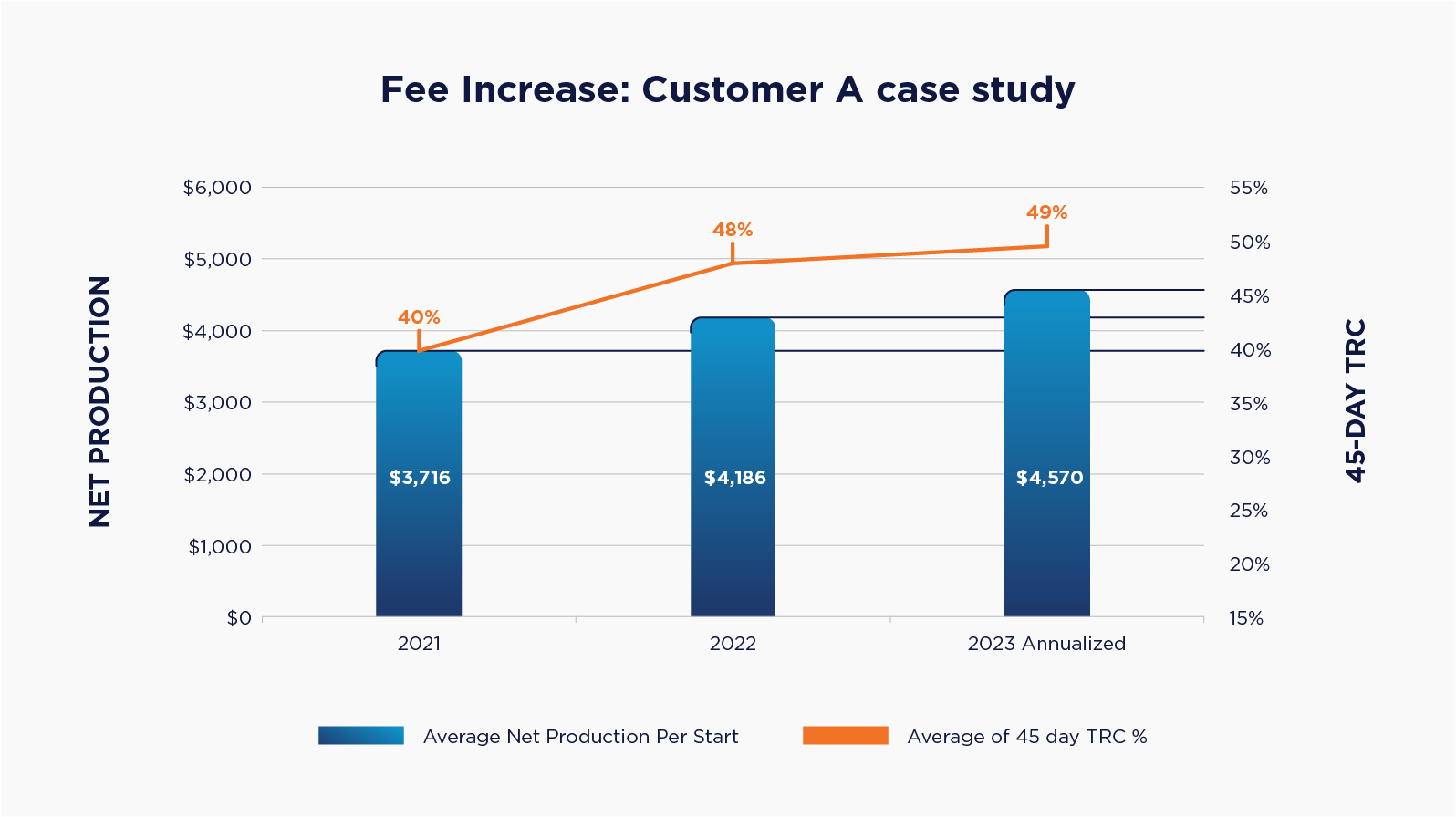
The first thing we did was help them redesign their fee program to help retain levels of service and help TCs to highlight the value of full treatment options. We tested and progressively lifted their fees over two years, monitoring their leading metrics throughout to ensure success. The bar chart (left axis) shows their average fee per patient, and the line graph (right axis) shows their 45-Day TRC. Two years into the study, they are enjoying 23% higher production and average fee per patient ($3,716 to $4,570), and their 45-Day TRC increased from 40% to 49%.
Sounds counterintuitive, right? It’s actually what we expected to happen. Two principles drove this outcome: 1) consumer value perception; 2) the team focused harder on selling value vs. price. For value perception, consider this: very few consumers can evaluate the quality of your treatment vs. another practice.
So how can they assess quality? Strangely enough, that’s price. If your practice looks and feels like a quality provider AND has higher fees, the consumer will subconsciously assume you are better. This is a phenomenon that has been proven with marketing studies across a multitude of industries. As for the team component, the test practices doubled down and incentivized their teams to deliver starts.
Adding Levels of Service
Now, increasing fees does not have to involve changing your rate card. An effective way to lift fees is to add levels of service, thus adding more value to your services that patients will pay more for. Many practices are adding lifetime retention programs to both increase fees and streamline post-treatment care protocols.
The value of lifetime retention can justify lifting fees by as much as $800/case and create differentiation for your practice. Leading providers like Retainers for Life and Retainer Club have some turnkey programs that make them easy to implement in your practice. There are other ideas to explore like take-home whitening and laser tissue contouring that promote a more dynamic aesthetic result.
Most orthodontists pride themselves on delivering exceptional orthodontic results but miss that the consumer perception of quality includes the whiteness and symmetry of the smile. Especially for adults, this can be a powerful upsell package that has a low cost to the practice and high perceived value. Consistent drops in dentist referrals should embolden you to get over the friction of adding take-home whitening trays and gel to treatment.
Other services like Gingival Contouring are quick upsells your practice can learn and implement. Many of the ‘wow’ clinical results shown by your favorite mentors likely involve a combination of these treatments. Consider adding these to your armamentarium.
Reducing Promotional Fee Discounts
The last way to increase fees is to target your discounting. This might be a bold proposition, as you might spark some friction with your TC. TCs often feel they need discounts to close starts. You can use the metric and testing methodology outlined above to advance this. However, I recommend an approach that settles all family business.
The best way to successfully reduce discounts is to incentivize your TCs and your team to buy in. Try this: pull your discount reports, and earmark HALF of that number to reallocate to juicing your TC and team incentives. Tell your team that you are doing this, so they understand that you are betting on them and rewarding them for finding better ways to convert patients.
Many doctors and TCs believe that stimulating starts can only happen by doing promotions. However, in many cases, the amount it takes to move a patient from ‘no’ to ‘yes’ is a big number ($150+). The reality is that the team’s focus and coordination are usually much more impactful.
Imagine if you added $50-75 for every Same-Day Contract to the incentive pool or paid out that amount for every start above the monthly start goal. If your team members could take home $500-1,000 more per month, how much more would they invest to fill open time slots from canceled appointments? How much better would they work together to clear chair time for an unscheduled bonding? How much more open would they be to cross-train on digital scanning to free up exam time?
We have found that every dollar you reallocate from discounts to team incentives translates to $3 of production upside. Try doing that math. You’ll be startled at what a difference that can make.
What I waited until the end to highlight is that any strategies to increase fees MUST be paired with payment term flexibility. Aggressive fee hikes compressed within treatment time will likely dull these tools and ratchet up the risk of conversion loss. OrthoFi has been a champion of Intelligent Flexibility since launching over 10 years ago, and our data continues to validate that being flexible delivers transformative rewards that dwarf any incremental cash or default risk.
If you are currently stuck in old models of tying payment time to treatment time or requiring minimum downs that cover clinical costs, much of the above will likely not work. Your first step should be to learn how to implement flexibility in your practice.
The power of Open Choice and Intelligent Flexibility enables you to see the rewards I am talking about. Most leading consultants today are buying into OrthoFi’s philosophy, so you can connect with your preferred consulting partner or take time to learn more by scheduling time with OrthoFi to review the data.
Conclusion
Orthodontic practices can’t do anything to change consumer confidence or conjure economic stability. They can’t fully counter the likely ebb of adult demand for treatment. But until we see those rebound, we are far from helpless. There are several strategies you can explore and employ to sustain the growth of your business. This article just covers one branch of alternatives. I have two more to cover, so stay tuned.
How To Sustain Growth in a Tight Economy Part 2: In-Network Insurance Participation
As we identified in part one of this series, the current economic landscape continues to trend light on consumer confidence with dropping savings rates and rising credit card debt. Gaidge data reveals that even though adolescent starts are beginning to come back, adult starts are down over 10% and have been dragging down the average practice by… Continue reading How To Sustain Growth in a Tight Economy Part 2: In-Network Insurance Participation
Key Leading Indicator Metrics for Your Practice
Key Leading Indicator Metrics for Your Practice Looking to make some changes in your practice, but how do you know you’re doing the right thing without absorbing a hit? The key is to have great leading indicator metrics to allow you to test price levels and get rapid feedback. The typical practice relies on Case… Continue reading Key Leading Indicator Metrics for Your Practice
3 Ways Your Practice Might Be Hurting Your Patient Experience
Welcome to the new era of orthodontics, where creating more value for your patients and teams in this ever-evolving business environment is the key to your success. As the industry continues to develop and improve patient care, it’s essential to discard outdated practices and embrace a fresh approach that not only improves profitability but also… Continue reading 3 Ways Your Practice Might Be Hurting Your Patient Experience
4 C’s for a Frictionless New Patient First Impression
As an orthodontic patient, there are a few things that are expected to be a little uncomfortable—queue mental image of cheek retractors, bite trays, and TADs! Though the path to a perfect smile can be daunting at times, we believe that the process of choosing a practice should be easy and maybe even a tad… Continue reading 4 C’s for a Frictionless New Patient First Impression
3 Tips to Achieve Your Practice Goals in 2022
Time to reflect on the lessons and wins of 2021, and start planning for the year ahead. The best way to plan? Set specific, attainable goals. Whether you are goal-setting for your entire practice, yourself professionally or for your personal growth—here are three simple, but often overlooked, tips for setting and achieving your goals. Let’s… Continue reading 3 Tips to Achieve Your Practice Goals in 2022
State of the Average Practice: COVID19 Recovery Watch
Well, however we got here, summer is upon us! Judging by the starts surging into our system, we seem to be experiencing a sharp bounce back. It is still very early to call it, and the threat of a second wave of regional or local closures is still out there, but we are happy to… Continue reading State of the Average Practice: COVID19 Recovery Watch
State of the Average Practice: Projecting Starts & Collections in the Recovery
Almost two months ago our industry, along with the rest of the world, braced for uncertain and unprecedented times. COVID19 will undoubtedly make an indelible mark in history and we’re still shuffling to find our ‘new normal’. We’re happy to report that we have strong proof of life. In the last two weeks, many of our practices… Continue reading State of the Average Practice: Projecting Starts & Collections in the Recovery



